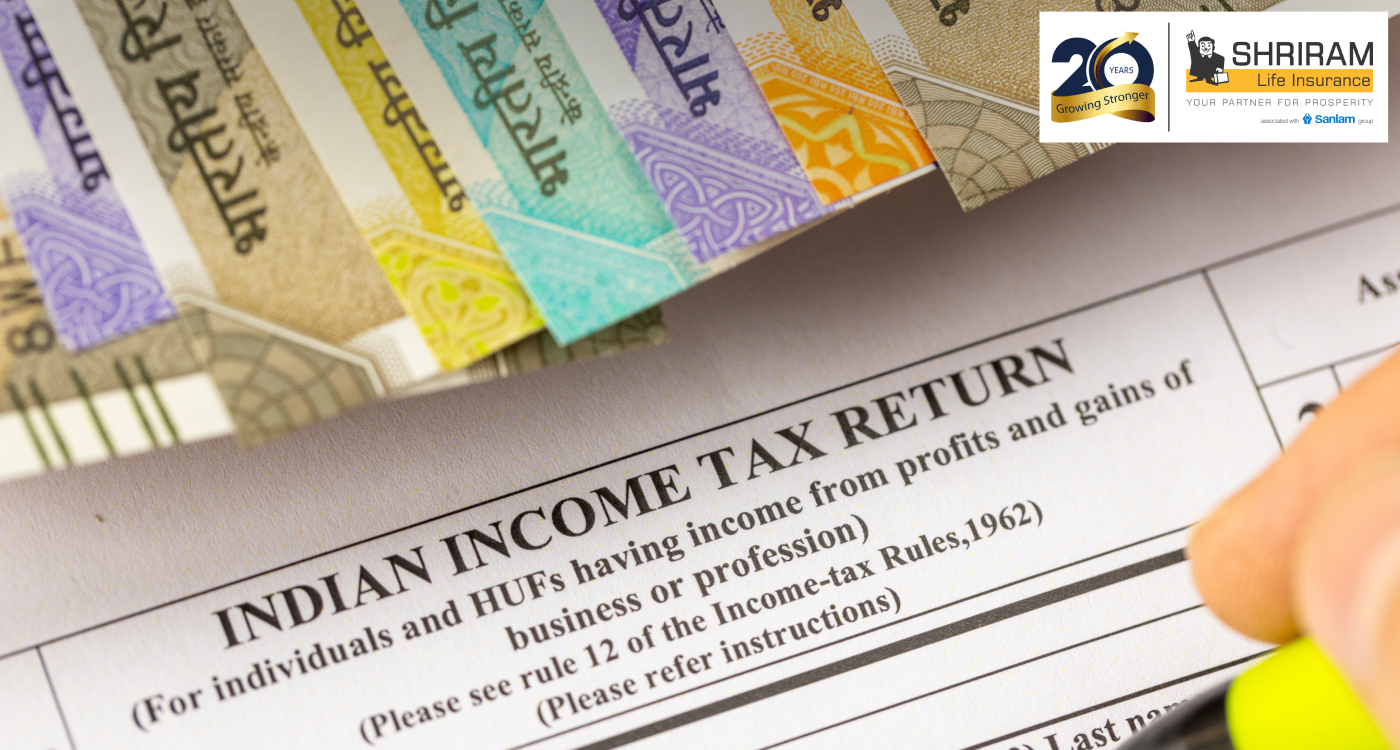Section 10(10D) of the Income Tax Act: A Complete Guide to Tax-Free Life Insurance Payouts
- Posted On: 08 Nov 2025
- Updated On: 08 Nov 2025
- 737 Views
- 5 min read

Table of Contents
Let's say you've been paying premiums on your life insurance policy for 15 years. When the policy matures, you receive ₹18 lakh. Now here's the question: do you have to pay tax on this amount? The answer depends on Section 10(10D) of the Income Tax Act.
Here's the good news. If you've structured your policy correctly, that entire ₹18 lakh stays in your pocket, completely tax-free. This is exactly what Section 10(10D) does for policyholders who follow a few simple rules.
Let's break down what Section 10(10D) is, and how you make the most of it.
What is Section 10(10D) of the Income Tax Act?
Section 10(10D) of the Income Tax Act, 1961, provides tax exemption on amounts you receive from a life insurance policy. This includes maturity benefits, death benefits, and even surrender values. The main condition is that your annual premium must stay within specified limits based on your sum assured.
In simple terms, if you pay premiums that follow the prescribed rules, the payout you or your family receives remains completely tax-free.
For example:
Let’s say you bought a policy with a sum assured of ₹10 lakh and you pay an annual premium of ₹1 lakh (which is 10% of the sum assured). Your entire maturity amount will be exempt from tax under Section 10(10D).
This exemption applies to both individuals and Hindu Undivided Families (HUFs). There is no upper limit on how much you receive tax-free, as long as you meet the premium conditions.
With Shriram Life Savings Plans, get tax benefits under Section 10(10D) and grow your wealth. |
Tax Exemptions You Should Know
There are several tax exemptions that make insurance policies rewarding. Let’s understand the Section 10(10D) income tax benefits in detail.
Life Insurance Policies Covered
Most life insurance policies qualify for tax exemption under this section:
- Term insurance plans
- Endowment or savings-oriented policies
- Unit Linked Insurance Plans (ULIPs)
- Whole life policies
Keyman insurance policies and employer-employee group policies do not qualify for this exemption.
Understanding the Premium Limits
The premium limits depend on when your policy was issued. This is where many people get confused, so pay close attention:
- For policies issued on or after April 1, 2012, your annual premium must not exceed 10% of the sum assured.
- For policies issued between April 1, 2003, and March 31, 2012, the limit is 20% of the sum assured.
- For ULIPs issued on or after February 1, 2021, the total annual premium across all ULIPs must not exceed ₹2.5 lakh.
- For non-linked policies issued on or after April 1, 2023, the total annual premium across all such policies must not exceed ₹5 lakh.
These dates matter. The Finance Act has updated these rules over the years, so knowing when your policy was issued helps you understand which rule applies to you.
Tax Exemption on Maturity Benefits
When your policy matures, the entire payout, including any bonuses, is tax-free under Section 10(10D) for maturity returns, provided you meet the premium conditions.
Let's say you receive ₹22 lakh when your policy matures. That full amount stays tax-free if your annual premium does not exceed the allowed limit.
Example of Maturity Benefit Calculation
Mr. Sharma bought a life insurance policy in 2016 with a sum assured of ₹20 lakh. He pays an annual premium of ₹1.8 lakh (9% of the sum assured). After 15 years, the policy matures, and he receives ₹28 lakh, including bonuses.
Since his premium is within the 10% limit, the entire ₹28 lakh is tax-free under Section 10(10D) for maturity returns.
Now consider Ms Rao. She has a policy with a sum assured of ₹10 lakh but pays an annual premium of ₹1.5 lakh (15% of the sum assured). When her policy matures, the payout becomes taxable under ‘Income from Other Sources’ because the premium exceeds the 10% limit.
The difference? Ms Rao will have to pay tax on her maturity proceeds, while Mr. Sharma keeps everything tax-free.
Death Benefits Are Always Tax-Free
Here's a relief for every policyholder. Regardless of how much premium you pay, the death benefit is always exempt from tax under Section 10(10D). Your nominee receives the full payout without any tax deductions.
Let's say a policyholder passes away and the nominee receives ₹25 lakh as a death benefit. The entire amount is tax-free. This rule applies even if the annual premium exceeds the prescribed limits.
This ensures your family stays financially secure during difficult times, without worrying about tax liabilities.
Eligibility Criteria for Tax Exemption
To claim the benefits of Section 10(10D), you need to meet these conditions:
- The policy must be issued by a registered Indian or foreign insurer.
- The premium-to-sum-assured ratio must follow the prescribed limits (10%, 20%, ₹2.5 lakh, or ₹5 lakh, depending on the policy type and issue date).
- The policy should not be a Keyman insurance policy or an employer-employee group policy.
- The policy should not fall under provisions related to Section 80DDA or be one for which benefits are claimed under Section 80C.
- For ULIPs and non-linked policies, the premium caps introduced in recent years must be followed.
How Section 10(10D) Works With Other Tax Rules
Life insurance offers layered benefits that help you save more while securing your family’s future.
Comprehensive Tax Benefits
Life insurance policies offer multiple tax advantages that can work together:
- Premiums you pay qualify for a deduction under Section 80C (up to ₹1.5 lakh per year).
- Policy proceeds remain exempt under Section 10(10D) if conditions are met.
- There is no upper limit on the exemption amount for eligible policies.
- Death benefits are always tax-free, no matter the premium amount.
These benefits help you plan for long-term wealth while reducing your tax burden.
TDS on Life Insurance
If your policy does not meet the exemption criteria, Tax Deducted at Source (TDS) applies.
Under Section 194DA, if the payout from a non-exempt policy exceeds ₹1 lakh, TDS at 5% is deducted on the income portion (total payout minus total premiums paid).
You receive a credit for this TDS when you file your tax return. However, it is better to ensure your policy meets Section 10(10D) conditions to avoid TDS altogether.
Section 10(10D) in the New Tax Regime
Section 10(10D) exemptions apply in both the old and new tax regimes. This is because the exemption relates to policy payouts, not to deductions under Chapter VI-A. You do not lose this benefit if you choose the new tax regime.
For NRIs With Indian Policies
Non-Resident Indians (NRIs) also qualify for exemption under Section 10(10D) for life insurance policies issued by Indian insurers.
An NRI with a ₹20 lakh policy paying a ₹2 lakh annual premium will receive tax-free maturity benefits if the premium ratio meets the 10% limit.
Making the Most of Section 10(10D)
Section 10(10D) is one of the most valuable tax provisions for life insurance policyholders. It allows you to receive maturity or death benefits tax-free, provided you follow simple premium rules.
With the right planning, you safeguard your family's financial future while making the most of available tax exemptions. Review your policy details, track your premium ratio, and ensure you maximise Section 10(10D) for maturity returns. Every rupee saved in tax brings you closer to financial freedom.
Disclaimer: This information provided is intended for general informational purposes only. For personalised recommendations, please consult a certified insurance professional.
FAQs
What is Section 10(10D) of Income Tax Act?
Section 10(10D) exempts the entire amount received from a life insurance policy, such as maturity benefits, death benefits, or bonuses, from income tax, if certain conditions are met.
What are some points to keep in mind regarding Section 10(10D)?
You must ensure your premium does not exceed the specified percentage of the sum assured (10% after 2012, 20% before 2012), and the policy should be purchased from an authorised insurer, meeting these conditions allows tax-free benefits.
What is the Section 10(10D) exemption limit?
There is no upper limit on the exempted amount, however, the policy must follow the premium-to-sum assured ratio limits to qualify for exemption.
MWP Act Explained: Safeguard Women’s Financial Future
OTP Verification
Please Enter OTP that has been sent to your registered
Mobile Number +91
You may be interested in
People also search for
Our Other Popular Plans







